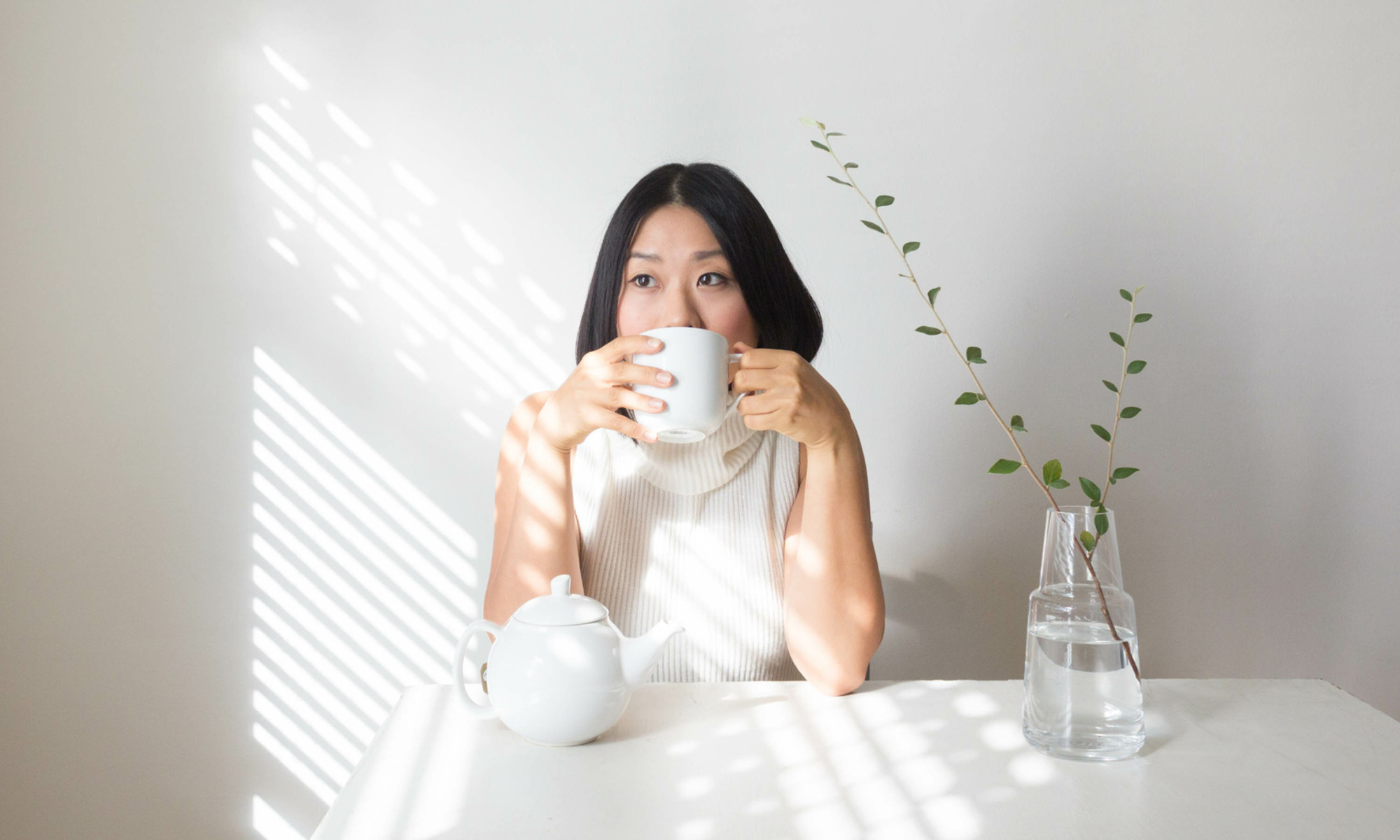Shiro Tsujimura’s Exploded Forms
Contemporary ceramist Shiro Tsujimura combines traditional Japanese styles of pottery with avant-garde sensibilities, aspiring to bring out the mu of each vessel he creates. The post Shiro Tsujimura’s Exploded Forms appeared first on Tricycle: The Buddhist Review.

When ceramist Shiro Tsujimura is asked about the type of work he makes, he says he has never been able to provide a satisfying answer. “I can talk about clay and kiln firing in any way I like, but what is it that I am looking for every day when I knead the clay, sift the ashes, and chop the wood?” he writes. “Answering this question with words and sentences seems to me much harder than making a teabowl.”
As an artist and former monk, Tsujimura tends to let his work speak for itself, aspiring to bring out the mu of each vessel he creates. Entirely self-taught, the potter is something of a rarity in the world of Japanese ceramics, and his international success is largely due to a series of chance meetings (prior to which he sold his wares off a straw mat outside Kyoto’s Buddhist temples). Now considered one of the most prominent contemporary ceramic artists in Japan, Tsujimura combines traditional Japanese styles of pottery with avant-garde sensibilities, embracing the imperfections of the clay and the unpredictability of the firing process to produce collapsed and exploded clay forms filled with character and vitality.
Last year, following an exhibition at Axel Vervoordt Gallery in Antwerp, Flammarion published the most comprehensive monograph on the artist to date, Shiro Tsujimura: An Art of Living. In addition to 135 photographs documenting Tsujimura’s life and work, the volume features short essays by Axel Vervoordt, Japanese photographer Hiroshi Sugimoto, and Guggenheim curator Alexandra Munroe, as well as a reflection by Tsujimura himself on his training as a monk and how it influences his approach to ceramics. Taken as a whole, the collection presents a portrait of a singular artist continually reinventing his craft.
 Overview of the Shiro Tsujimura exhibition (2022), at the Terrace Gallery at Axel Vervoordt Gallery, Kanaal, Wijnegem, Belgium © Laziz Hamani from Shiro Tsujimura, Flammarion
Overview of the Shiro Tsujimura exhibition (2022), at the Terrace Gallery at Axel Vervoordt Gallery, Kanaal, Wijnegem, Belgium © Laziz Hamani from Shiro Tsujimura, FlammarionRaised on a cattle farm outside Nara, Tsujimura dreamed of becoming a painter from an early age but was quickly disillusioned by the “sham” art school application process—he initially failed the entrance exam for Tokyo University of the Arts, and while he passed the exam for Tama Art University, he decided not to enroll. After being turned away by several artists he selected at random from an art directory, he decided to ordain as a Zen monk at Sanshoji, a small Soto Zen temple. There, he lived a life of asceticism, waking at 4:30 a.m., meditating, reading sutras, and doing chores around the temple, until eventually he was sent on a pilgrimage with only enough money to cover his funeral expenses. “Sometimes I slept in a temple, sometimes in the open air,” he recalls. “Sometimes I headed for the mountains, taking along a little food, and did zazen for a few days.” Yet after two years of intensive practice, he decided to leave monastic life to pursue art.
Upon returning to Tokyo, Tsujimura enrolled in the Takami Art Research Institute, where he began studying oil painting. Because of the fluidity of the program, he was also able to pursue his interests in ceramics, calligraphy, and other arts. He later wrote that he gravitated toward these mediums because he viewed them as spontaneous art forms: “In a spiritual sense, they are all the same—art is an expression from the body.”
 Shiro Tsujimura painting in his studio surrounded by round and kohiki jars and vases © Shouya Grigg from Shiro Tsujimura, Flammarion
Shiro Tsujimura painting in his studio surrounded by round and kohiki jars and vases © Shouya Grigg from Shiro Tsujimura, FlammarionIn 1970, while visiting the Japan Folk Crafts Museum in Tokyo, he encountered a 16th-century oido teabowl that he later described as “a friend, or a fellow monk.” He recalls, “The generosity that emanated from this bowl—the way it embraced everything, good and bad, and yet was not overbearing—moved me deeply. . . . I can only say that I felt as if I was facing a person rather than a bowl, and that I seemed to be in the presence of the Divine Mother and the Great Compassion.”
Inspired by this experience, Tsujimura set out to create ceramic forms that would evoke similar mind-states—as he notes, “As with the mu of Zen, there must be a mu of ceramics.” Returning to his hometown of Gose, he began to make pottery while helping his family with the cattle-breeding business, farming by day and sculpting teabowls by night. As an amateur potter, he made do with the materials he had at hand, fashioning his own potter’s wheel by attaching a motor to the wheel of a farming machine and constructing a simple direct-flame kiln despite never having seen a kiln before.
“As with the mu of Zen, there must be a mu of ceramics.”
In his first year, Tsujimura quickly learned how to improvise and adapt to his environment, as the kiln’s roof was damaged first by fire and then by one of the strongest typhoons in decades. Rather than discard the vessels that were improperly fired or damaged, he embraced this element of chance, incorporating the kiln’s unpredictability into his artistic practice. “When a vessel emerges from the kiln baptized by fire, it is to be expected that accidents will occur, and the nature of these accidents is not entirely predictable,” he writes. “This seems to me to be analogous with the way in which we live our lives: changing our individual destiny, overcoming all obstacles, but still moving within the river of human destiny that is beyond our control.”
In 1972, Tsujimura acquired three-quarters of an acre of forest land in Mima in the foothills east of Nara with the intention of setting up a studio. Together with his now-wife, Mieko, and some friends, he cleared the woods and began building a kiln and teahouse from scavenged lumber and tiles from deserted buildings. When he got word that some of the oldest pottery studios in Shigaraki were replacing their old brick noborigama kilns with modern electric ones, he retrieved pieces of brick from the discarded kilns and hauled them back to Mima in a secondhand two-ton truck, using them as the foundation for his own kiln. Only after he and Mieko completed the kiln and a teahouse did they build a small 430-square-foot cottage to replace the tent they had been living in. “The house was an afterthought,” Tsujimura says. “I have lived my life by building what I wanted first.”
 Immersed in nature, with wide vistas through the large windows, this tsukimidai is an outbuilding designed for viewing the moon and lends itself to contemplation and meditation © Laziz Hamani from Shiro Tsujimura, Flammarion
Immersed in nature, with wide vistas through the large windows, this tsukimidai is an outbuilding designed for viewing the moon and lends itself to contemplation and meditation © Laziz Hamani from Shiro Tsujimura, FlammarionOver the next decade, he built about ten kilns, experimenting with shape and size to see how each affected the firing process. For each vessel he makes, Tsujimura gathers soil from the neighboring fields and mountains and pounds, sifts, and mixes it himself to make his own clay—what he describes as clay “with character,” exceptionally rough and full of imperfections. He sees preserving this roughness as a way of honoring the spirit of the soil, noting, “There is no country without soil. If you get familiar with the diverse properties of local soil—the color it turns after firing, the texture—you can make good use of it to create a style of ceramics that is unique to the region.”
Tsujimura constructs his forms in conversation with the earth, aiming to find the right balance between his own creative process and the will of the clay itself. “Clay has a strong personality,” he reflects. “If I emphasize myself in the process, the personality of the clay will vanish. In practice, however, I try to make the clay my own, even if it is difficult to find the right balance between myself and the clay.” In this way, he aims not to control the clay but to follow its lead, embracing its imperfections and honoring the earth it came from.
 Left: Iga-style small flower vase, 2005 © Laziz Hamani from Shiro Tsujimura, Flammarion. Right: Several Iga-style flower vases displayed in a wooden cabinet designed by Axel Vervoordt for the Shiro Tsujimura exhibition at the Terrace Gallery at Axel Vervoordt Gallery, Kanaal, Wijnegem, Belgium, 2022 © Laziz Hamani from Shiro Tsujimura, Flammarion
Left: Iga-style small flower vase, 2005 © Laziz Hamani from Shiro Tsujimura, Flammarion. Right: Several Iga-style flower vases displayed in a wooden cabinet designed by Axel Vervoordt for the Shiro Tsujimura exhibition at the Terrace Gallery at Axel Vervoordt Gallery, Kanaal, Wijnegem, Belgium, 2022 © Laziz Hamani from Shiro Tsujimura, FlammarionFor many of his pieces, Tsujimura takes this a step further by returning the vessels he creates to the earth, burying thousands of his stoneware jars and pots in the forest to age, sometimes for years or even decades. Once dug up from the soil, the resulting pieces feel as if they have been excavated from centuries past—yet they also feel entirely new. (Hiroshi Sugimoto aptly describes Tsujimura in his introductory essay as living “in a New Stone Age.”)
As a potter Tsujimura is incredibly prolific: Over the course of a single year, he typically finishes about 4,000 pieces, firing his kilns twice a week (for reference, many studios will fire their kilns four times a year). His works range in scale from minute to monumental, from small teabowls that he uses in his own take on traditional Zen tea ceremonies to exploded tsubo, or large utilitarian vessels traditionally used to store tea leaves or rice. Some pieces are more explicitly Buddhist—after seeing the Five Hundred Arhats of Hōjō at Rakanji, for instance, he started etching arhat motifs into his vases and jars—while others simply incorporate the lessons of impermanence he learned from his Zen training.
 Left: Two tall Iga-style flower vases, 2013, at the penthouse of the Greenwich Hotel, Tribeca, New York © Laziz Hamani from Shiro Tsujimura, Flammarion. Right: Composition of collapsed vases, c. 2005. Natural ash glaze © Jan Liégeois for Axel Vervoordt Company from Shiro Tsujimura, Flammarion
Left: Two tall Iga-style flower vases, 2013, at the penthouse of the Greenwich Hotel, Tribeca, New York © Laziz Hamani from Shiro Tsujimura, Flammarion. Right: Composition of collapsed vases, c. 2005. Natural ash glaze © Jan Liégeois for Axel Vervoordt Company from Shiro Tsujimura, FlammarionBefore he started exhibiting his wares more formally in galleries, Tsujimura sold them off a straw mat outside several temples in Kyoto, including Nanzenji and Sanjusangendo. In 1977, to celebrate his 30th birthday, he organized his first solo exhibition, which he held at his home. (The exhibition was so successful that the mountain road leading up to the property was clogged with cars.) From there, Tsujimura’s broader success came largely by chance: A dentist in attendance, Kosaku Nukada, took a liking to his work and introduced him to the staff at Mitsukoshi Department Store in Osaka, where the potter had his first major exhibition outside his home. Following the success of that exhibition, he began showing his work throughout Japan and eventually around the world. Currently, his work is held in the permanent collections of a number of prominent museums internationally, including the Metropolitan Museum of Art, the Smithsonian Institution, the Art Institute of Chicago, the Asian Art Museum of San Francisco, the British Museum, and the Chado Research Center in Kyoto.
Though at this point Tsujimura has been creating pottery for five decades, he still approaches his work with a spirit of curiosity and not-knowing. As he writes, “When I continue making things I don’t understand, there are things I start to understand, but again other things come up that I don’t understand. That’s what makes it interesting.” This commitment to curiosity exemplifies his belief that the only way to evoke true emotion and feeling is by starting from scratch again and again—whether in his ceramics, painting, or daily life. “Building this hut, painting, ceramics, selling my wares—these are all one and the same thing for me,” he notes. “I wish to continue searching for that ‘something’ that comes from my inner Zen and from making things.”

 ShanonG
ShanonG 






























